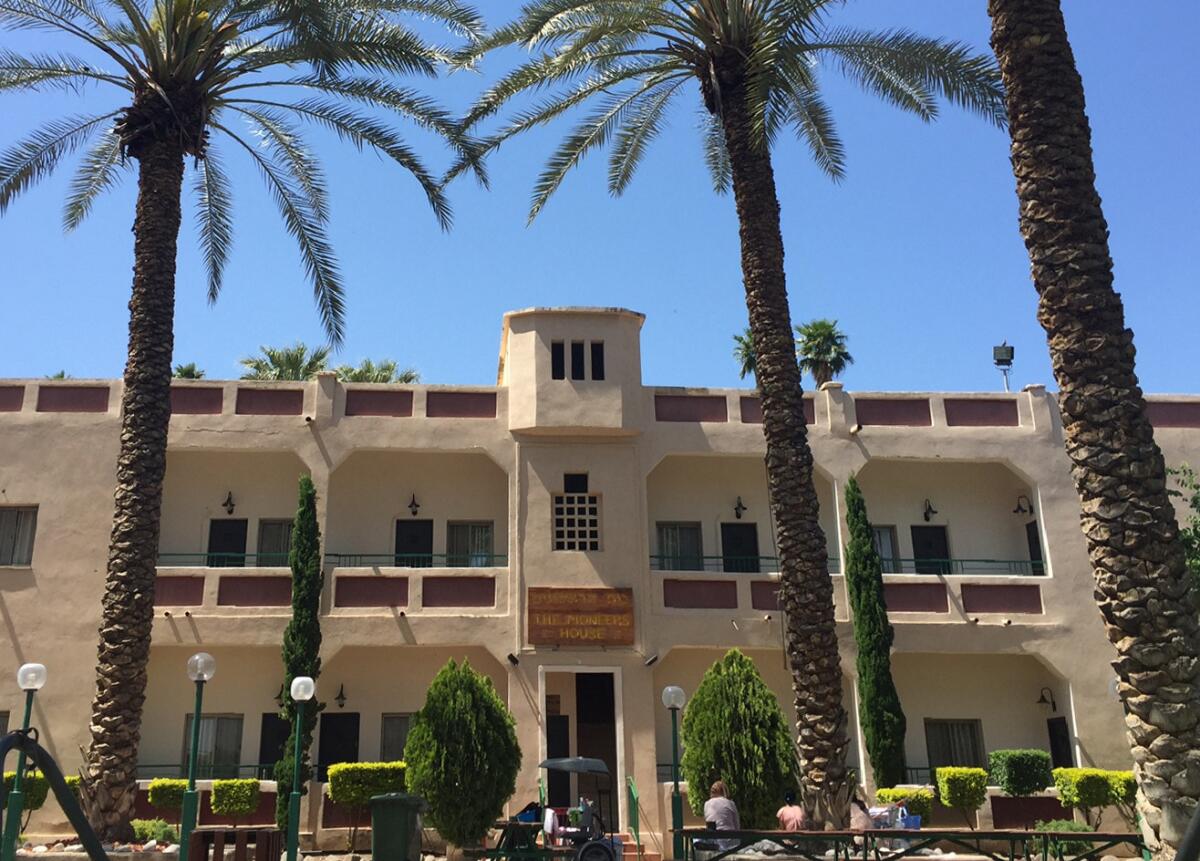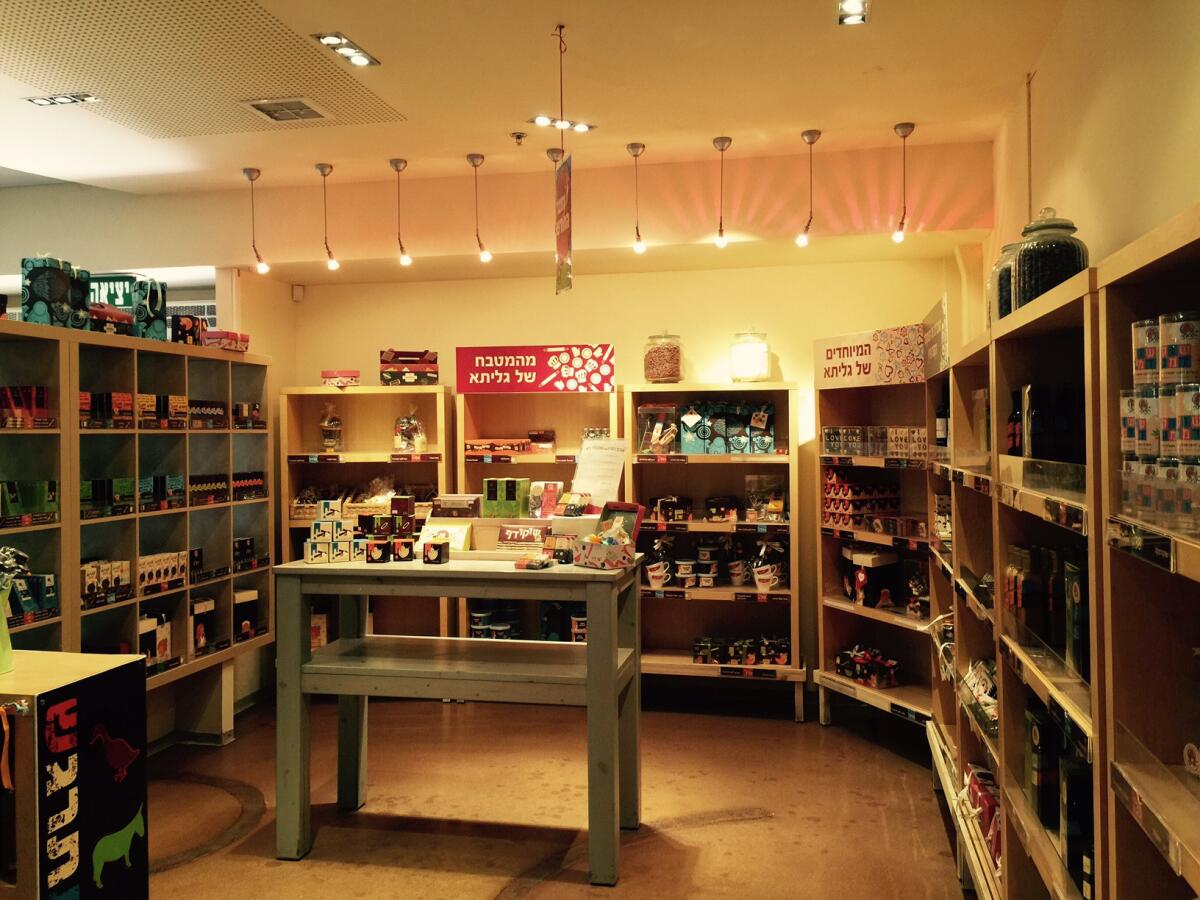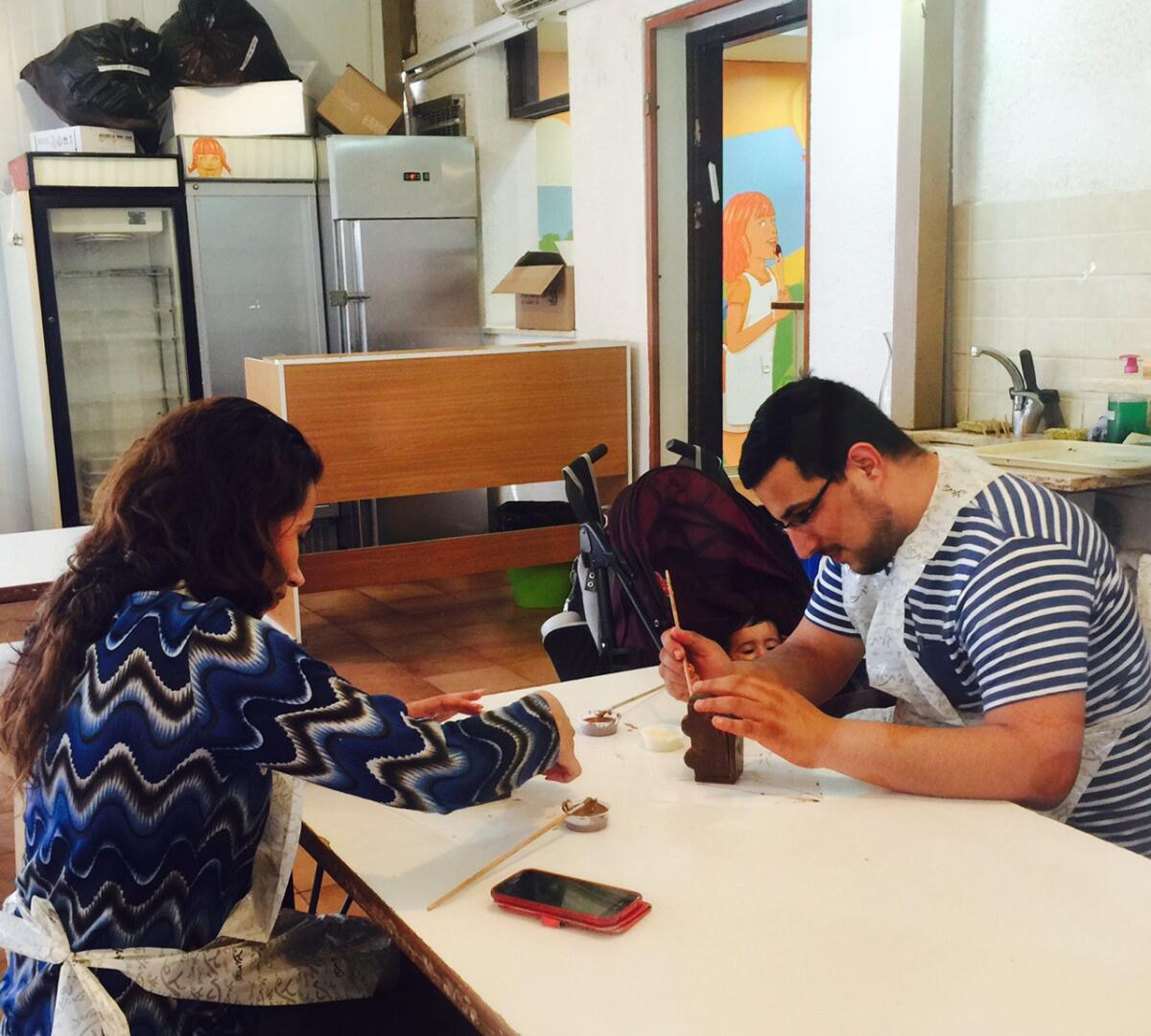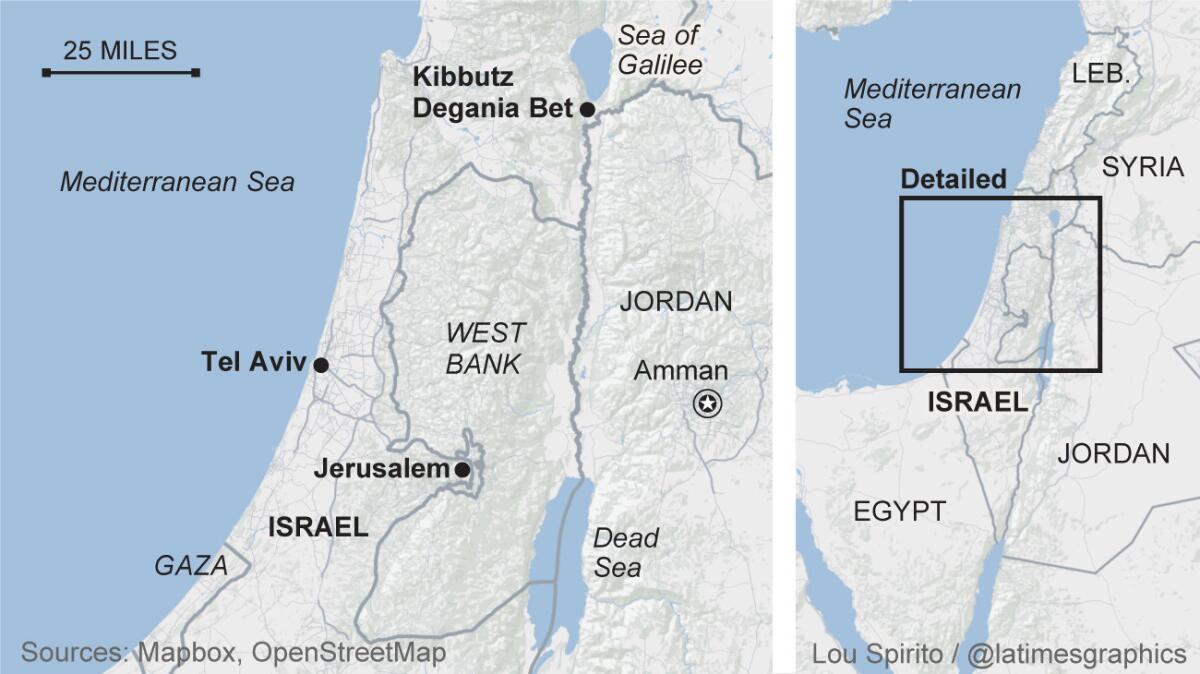Israelâs Kibbutz Degania is a chocolate loverâs dream
Whether you are a Christian, Jew, Muslim or history-loving atheist, you will be deeply moved by Jerusalem. If you are a fan of all things urban, including art and a vibrant food scene, you will swoon over Tel Aviv. If you are, like me, an admitted chocoholic, you'll satisfy your cravings on a visit to Kibbutz Degania.
Degania is near the southern shore of the Sea of Galilee, just 90 miles from the beaches of Tel Aviv and the historic center of old Jaffa. Surrounded by natural beauty and a rich biblical and political history, itâs a wonderful base to explore the northern part of Israel.
Here's a budget tour to Israel for less than $1,500 â including airfare from LAX »
Kibbutzim, the plural Hebrew word for âgathering,â were the original collective agricultural settlements in Israel. They were started before statehood in the early 1900s by young Ashkenazi Jews and were based on the regionâs early attempts to construct socialist democratic and economic ideals. Light industries were added later, and all income generated was pooled.
My mother, born in 1931 in old Jaffa, then a part of British Mandatory Palestine, had spent some of her youth at a kibbutz and always spoke lovingly of those memories. In early ApriI I returned to Israel, where I combined my love of this interesting country with my love of chocolate. It was, for me, a match made in heaven.
Degania, established in 1909, was the first of such kibbutzim. Early participants included politician David Ben-Gurion, military legend Moshe Dayan, the second child born at Degania, and war hero Joseph Trumpeldor.

A long-simmering dispute at Degania about child-rearing came to a head in the 1950s. One faction believed that kibbutz children should live with their parents until they complete high school; the other believed Degania should stay true to traditional kibbutz ideology, with offspring living in separate childrenâs homes.
The issue was resolved when Degania was divided in two, separated by about 1,600 feet. They were called Degania Aleph and Degania Bet â the A and B of the Hebrew alphabet.
See the most-read features this hour »
Today, all kibbutz children live with their parents. Like most of the 300 kibbutzim in Israel, Degania has been privatized because of population declines and reductions in government funding. .
As part of this privatization, Degania Bet, with 200 adult members, today has two main industries: manufacturing silicon products for medical use and commercial farm equipment spraying machines.
It also has a guesthouse with 46 rooms where visitors can sample kibbutz life.
The pièce de résistance, however, is the Galita Chocolate Farm, in an old stone building (a former cowshed) on the grounds of the kibbutz.

The âfarm,â started by Galit Alpert nine years ago, produces 24 tons of chocolate annually. It has proved profitable, and for those who believe consuming chocolate is a near-religious experience, a visit is informative, creative and, of course, deliciously caloric.
As you enter the farm, the intoxicating aroma is ever-present. Thereâs also a café and a boutique offering chocolates for sale. You can observe production through large glass windows where workers dressed in white like laboratory scientists produce artistic creations using modern equipment. Missing is the conveyor belt Lucille Ball made famous in 1950s America.
Most important for me were the several chocolate workshops that were offered, such as Lick Your Fingers, Chocolate Filled and Loving Chocolate. I selected the last, because loving chocolate sums up the core of my earthly existence.
At a minimum I hoped to see if could complete the 45-minute workshop without eating all my coursework. I failed miserably.

To whet my appetite, I watched a 12-minute film on the history and origins of Galita chocolates. The story begins with cacao trees in Africa, where the pods turn from green to orange-yellow. Local women sing during the harvest because they believe it makes the cacao sweeter.
After the husks are removed, the white bean emerges and is fermented and dried. Its quality is graded, and then it is exported to Belgium.
There the beans are cleaned, roasted and the shells removed, leaving only the nibs for processing into white, milk or dark chocolate. From Belgium the chocolate is exported to Galita.
Under the patient watch of my instructor Shani, I spent the next 45 minutes in a light-filled room of long tables with enough chocolate to easily convert Jack Sprat. Accompanied by chocolateâs best bosom buddies â cinnamon, chopped peanuts, multicolored and chocolate sprinkles, gummy bears, coconut shavings and chopped cookies â I tried, with little success, to create something pretty. I also tried not to eat everything in sight.

I learned some things:
â You need the patience of Job to make delicious chocolate aesthetically beautiful.
â Itâs much easier to buy finished fine chocolate than to create it.
â Chocolate artistry is a far better use of this space than the cowshed ever could have been.
â Above all, playing with chocolate was a ton of fun.
When my workshop was over, Shani packaged my less-than-lovely yet delicious creations in a ribbon-tied box that could withstand international travel. They did not make it back to Tel Aviv.

If you go
THE BEST WAY TO TEL AVIV
From LAX, El Al offers nonstop service to Tel Aviv, and United, KLM, Delta, Alitalia, Turkish, Lufthansa, Air France and Air Canada offer connecting service (change of planes). Restricted round-trip airfares from $1,730, including taxes and fees.
Cars can easily be rented, but I used an English-speaking guide with a tourist car: Tamy Halperin, [email protected]. She can arrange visits to other areas of interest throughout Israel.
WHERE TO STAY
Kibbutz Degania Guesthouse; 011-972-4-675-5660, www.lat.ms/deganiabet. Double rooms from $120, including breakfast. Entry to the Galita Chocolate Farm and film is free; workshops are $15 to $20 per person or $48 for a family of four.
Brown TLV Urban Hotel, 25 Kalisher St., Tel Aviv; 011-972-3-717-0200, www.browntlv.com. Doubles from $300, including breakfast at of one of four restaurants within a two-minute walk. Near Carmel Market and artsy Neve Tzedek neighborhood,
WHERE TO EAT
Salva Vida-Restaurant in Movement, 25 Kalisher St., Tel Aviv; 011-972-3-778-8996, www.browntlv.com/Salva-Vida. Napa-trained chef Yuval Fachlerâs new restaurant serves innovative farm-to-table cuisine. Mouthwatering lamb with bacon.
Herbert Samuel, 6 Koifman St., Tel Aviv; 011-972-3-516-6516, www.herbertsamuel.co.il. Meant-to-be-shared small plates.Try Chef Adir Cohenâs dreamy coffee and halvah ice cream.
TO LEARN MORE
www.visitisrael.com, for general tourism information and trip planning
Consulate of Israel, 11766 Wilshire Blvd., Suite 1600, Los Angeles; (323) 852-5500, embassies.gov.il/la/Pages/default.aspx.
ALSO
Israel travel program seeks to strengthen Jewish connection
Israel beefs up troops in West Bank after Tel Aviv shooting
Exploring chocolate at the source: Dandelion Chocolate trip to Belize
Sign up for The Wild
Weâll help you find the best places to hike, bike and run, as well as the perfect silent spots for meditation and yoga.
You may occasionally receive promotional content from the Los Angeles Times.



